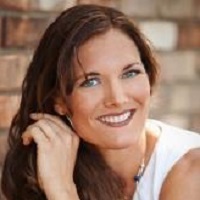You’ll be a lot happier when you stop seeing people as you are not, and instead see them as you are.
This phrase hit me last week, as I sat in reflection about the relationships in my life. Friends, co-workers, acquaintances, family, ex-family.
The people I am happiest around, drawn to, and comfortable with are the ones with whom I have the most synchronicity. We’re generally up to the same kinds of things and most often around the same times. That makes sense, right, given the law of attraction? Of course that’s how it works. I tend to see our engagement with one another in terms of agreement, not dissonance.
And, likewise, the ones I don’t have that same experience with, well, you could say we’re a bit out of sync. Maybe it’s a values conflict, could be my interests are different than theirs, maybe there’s unfinished business left unattended, or perhaps I’ve simply decided that we “don’t get along.” But, they’re still in my life. I still see and interact with these people. My life is not exclusively filled with all simple and easy relationships.
Nor should it be. We can’t challenge our way of thinking without confronting what we already believe to be true.
So I zoomed out, and I looked around me, at other relationships, and other ways that people interact, and especially at our political climate and culture, and most especially at the divide. I looked at the “I am X, and you are Y and since you are there, and I am here, we can’t Z.”
When I taught kindergarten, years ago, one of the State Standards was something along the lines of “classify objects into given categories…” and so we’d spend many teaching hours facilitating sorting activities. These things are red, those are blue. These are squares, those are circles, and that one is called a rhombus. This is a pyramid, but it is made of triangles and a square. And so forth.
What is the same? What is different? Tell me why and how.
This training starts early, it’s a part of how we learn. In some sense, it’s how we survived as early man. Sameness was safe. Differences presented possible threats. As we process, input goes either into the known information repository, or the new information citadel, our sentries patrolling constantly to decide what does and does not belong inside each space, and determining what to do with it once it’s there.
As we grow, and then on into adulthood we meet new people in real life, and we see and listen to people on the media, and we keep looking for just that: How are the things you do and say and think and look like the same and different than the things I say and do and think and look like?
It’s a rather discriminatory mode of learning, isn’t it? So perhaps it should be of no surprise to me that this model permeates beyond its basic biological purpose—to store and retrieve information—and that we are in the habit of taking that information and making poor decisions with it. That we are leveraging that knowledge to gain power—personal, political, or otherwise. That we are allowing what is different to become fear, and fear based action, instead of understanding.
But it still does surprise me. And saddens me. It’s 2016 and we’re still leading our lives in a discrepancy model, even though we know the function of identifying differences is to determine how things fit together as a whole, not to keep them in separation.
So I come back to me. And I look to my conversations. When I’m talking to someone to whom I have something in common, I can see them through the lens of sameness. It’s a way in, and makes me feel secure and related and that we can advance our conversation or relationship together. What I see is unity. What I feel is optimism. What is want is closeness. I am a yes for possibility.
When I’m around someone I see as difficult, tiresome, complicated, that neither sees me nor allows me to see them, or that I’ve labeled as wrong—I can’t find my way into the space of like. What I see is different. What I feel is unease. What I want is distance. I am a no for connection and growth.
But whole is the goal? What I see in others is both a reflection of what I see in myself, and on what I choose to focus my attention. And I know, I’ll be a lot happier when I stop seeing people as I am not, and instead see them as I am.
~
Author: Michelle Sweezey
Image: Flickr/Ally Aubry
Editor: Travis May












Read 0 comments and reply